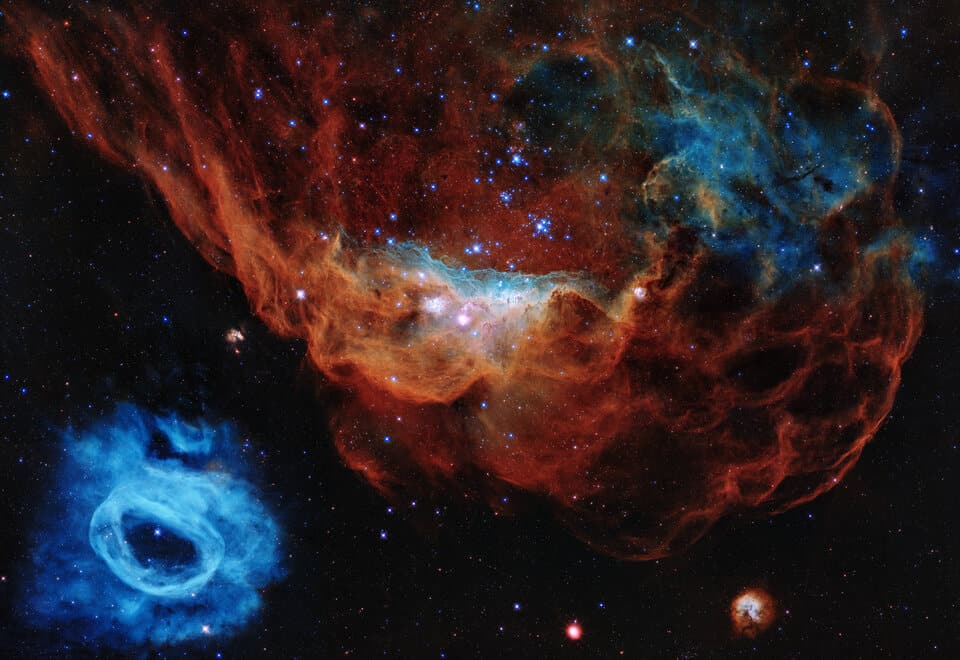The Cosmos with NGC 2014
Although NGC 2014 and NGC 2020 appear to be separate in this visible-light image, they are actually part of one giant star formation complex.
The star-forming regions seen here are dominated by the glow of stars at least 10 times more massive than our Sun. These stars have short lives of only a few million years, compared to the 10-billion-year lifetime of our Sun.
The sparkling centrepiece of NGC 2014 is a grouping of bright, massive stars near the centre of the image that has blown away its cocoon of hydrogen gas (coloured red) and dust in which it was born. A torrent of ultraviolet radiation from the star cluster is illuminating the landscape around it.
These massive stars also unleash fierce winds that are eroding the gas cloud above and to the right of them. The gas in these areas is less dense, making it easier for the stellar winds to blast through them, creating bubble-like structures reminiscent of coral, that have earned the nebula the nickname ‘Brain Coral’. This image is one of the most photogenic examples of the many turbulent stellar nurseries the NASA/ESA Hubble Space Telescope has observed during its 30-year lifetime. The portrait features the giant nebula NGC 2014 and its neighbour NGC 2020 which together form part of a vast star-forming region in the Large Magellanic Cloud, a satellite galaxy of the Milky Way, approximately 163 000 light-years away.
